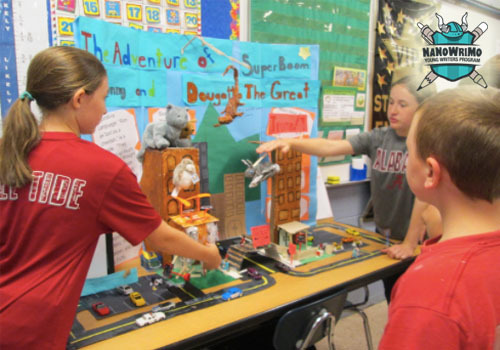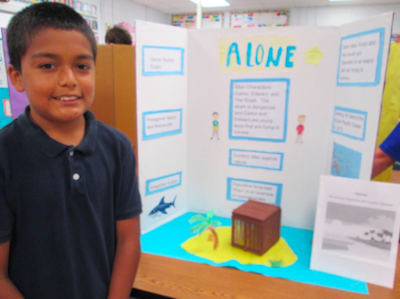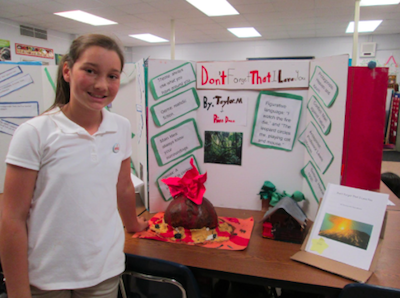Tailoring the Young Writers Program to Fit Your Classroom

In addition to the main NaNoWriMo and Camp events each year, NaNoWriMo provides free creative writing resources to educators and young participants around the world through our Young Writers Program. Today, educator Vicki Gripp shares how she has tweaked the framework and resources that we provide to make the program work for her class:
Although November is the traditional month for NaNoWriMo, I have found that the best time for my students to engage in extended fiction writing projects is during the last month of school, after state testing is completed. There is still some remaining time to delve more deeply into topics that we wish to explore, and we also want to do projects that are fun!
This year, my students decided that they wanted to tackle novel writing, either individually or in pairs. In addition to writing, they would also build models of the characters and the settings of their novels, and invite other classes to view their presentations. We explored the essential question, “What is involved in writing a novel?”
Since every student had a district-provided Chromebook and access to Google Docs and Google Classroom, it was possible for my students to brainstorm ideas for their characters, settings, and plots using the free online Young Writers Program workbook. They would answer questions and prompts from the workbook by setting up their screens with the workbook on one side and a document on the other. In this way, they could submit responses to me through Google Classroom assignments as often as I felt I needed to check. We started by having a “Character Check” assignment, followed by a “Villain Check” assignment, and then a “Plot Check” assignment. They enjoyed thinking about and discussing their responses to the workbook questions about the characters. For extra ideas about plot twists, I provided the Writer Emergency Cards from the teacher resource kit. Once the students had completed the three checks, they were ready to start writing!

The students spent three weeks doing extended writing, conferencing, and revising with their partners before submitting their first drafts to a “Novel Check”. It was easy for me to type comments and suggestions that students could see and to keep track of students who had and had not completed assignments. Students were encouraged to review elements of fiction, including characters, settings, plot, rising action, climax, theme, using dialogue, and using figurative language. They also practiced presenting their novels and giving brief summaries of their stories to the younger students who visited our classroom, which gave them speaking practice in a relaxed, informal setting.

Once the novels were finished, we created a “Novel Fair”, that included edited and printed final copies of the novels and models of the settings. Each novel presentation included a trifold board and some sort of 3-D display. I was very pleased with the quality of their stories and the attention to detail that the students showed in their novels and in their models. The genres ranged from mystery, science fiction, realistic fiction, and historical fiction to animal stories, baseball stories, and adventure.
Near the end of the project, we checked the word counts, and most of the stories were between 3,000 and 4,000 words. Although I only recorded participation grades for these projects, I could have created rubrics for several different stages. Above all, I wanted the students to enjoy the activity, gain confidence in their writing, and experience the complexities and joys of creating a novel, which is what the NaNoWriMo Young Writers Program is all about.

Vicki Gripp has taught 6th grade students at Stapleton Elementary School in Stapleton, Alabama, since 2005. She previously taught elementary and kindergarten students in Mobile County and in Nevada. Mrs. Gripp has also been a practical teaching supervisor for the Royal Academy of Dance, a world-wide non-profit educational organization for teachers of classical ballet. Mrs. Gripp holds a Bachelor of Science in Education degree from the University of Nevada, Las Vegas; a Master of Science in Education degree from Walden University; and Reading Specialist Pre-Kindergarten through 12th Grade Certification from the University of South Alabama. She is a Baldwin County trained eMINTS teacher and she has also completed training in the Baldwin County Schools Digital Renaissance Leadership Academy.
Chris Baty's Blog
- Chris Baty's profile
- 63 followers



